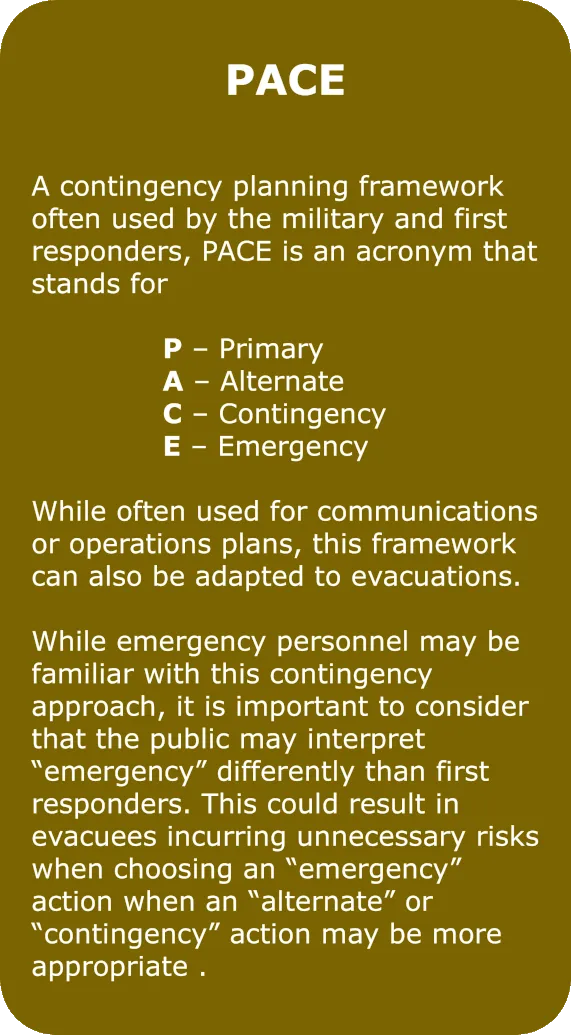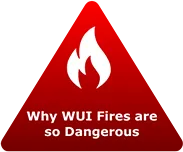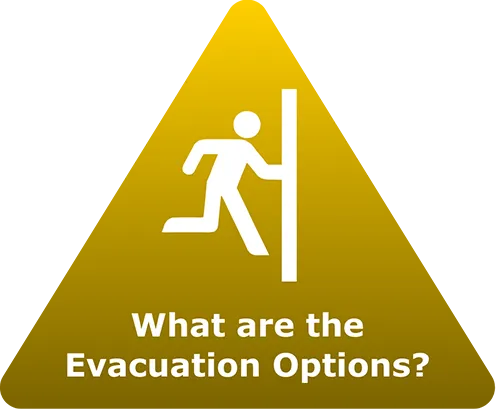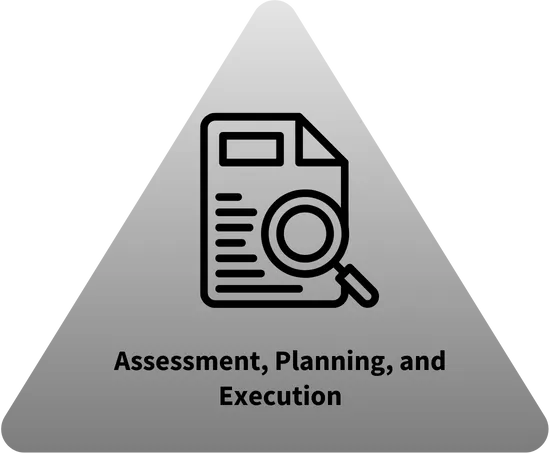
WUI Fire Evacuation and Sheltering Considerations — Assessment Planning and Execution

THE MISSING LINK: WHY TRADITIONAL EVACUATION PLANS AREN'T ALWAYS ENOUGH
Evacuation is the default safety strategy in most wildfire scenarios but many fires move too quickly for standard plans to succeed. Communities need to prepare for situations where full evacuation isn't possible, adapting their strategies to the pace and unpredictability of WUI fires.
No-notification fire events are some of the most difficult scenarios to plan for and are frequently not included in existing evacuation and community response plans. Contingencies must be developed for these events where full evacuation cannot be safely accomplished in time.
Planning for no-notice events could include the identification and labeling of both safety zones and Temporary Fire Refuge Areas (TFRAs), along with communication of these new evacuation response plans to first responders and residents. TFRAs will be discussed later in this module.
While safety zones may be identified and labeled in some communities, TFRAs may not be part of many existing evacuation plans or are frequently not labeled.
CURRENT ALTERNATIVES TO EVACUATION
Individuals often choose to take protective actions other than evacuation, including “stay and defend” or “shelter in place.” In some cases, they may be forced to do so if fire conditions prevent evacuation. Contributing factors include:
- Personal desire to stay and defend, whether adequately prepared or not
- Lack of information about what to do
- Resistance to evacuate due to cost, inconvenience
- Inability to evacuate due to lack of transportation or disability

Select communities have developed dedicated plans to implement a shelter-in-place alternative depending on the characteristics of the community and their particular hazard, geography, and population. Pepperdine University is an example of a community that has implemented a shelter-in-place program.
These approaches are not universal and may not work in all scenarios. The wide range of potential fire and ember exposure intensities renders stay-and-defend or shelter-in-place responses at residences hazardous at best, and deadly at worst.
Read on to learn more about each current alternative. Learn more about a new approach called Temporary Fire Refuge Areas later in the course.



